
Amber is fossilised tree resin. Unlike traditional fossils found on land or in the sea, amber can preserve ancient life forms in incredible detail. It’s often considered the “holy grail” of palaeontology worldwide.
Amber acts like a time capsule, capturing tiny animals, plants and even microorganisms from millions of years ago. These fossils – also known as inclusions – can appear astonishingly fresh, preserved just as they were when they died trapped in sticky tree resin.
Australian amber is now helping to understand the biological diversity of ancient Gondwanan environments from 42 million years ago and their connections to today’s Australian forests. From it, we can learn yet more reasons for why we must protect today’s forests.
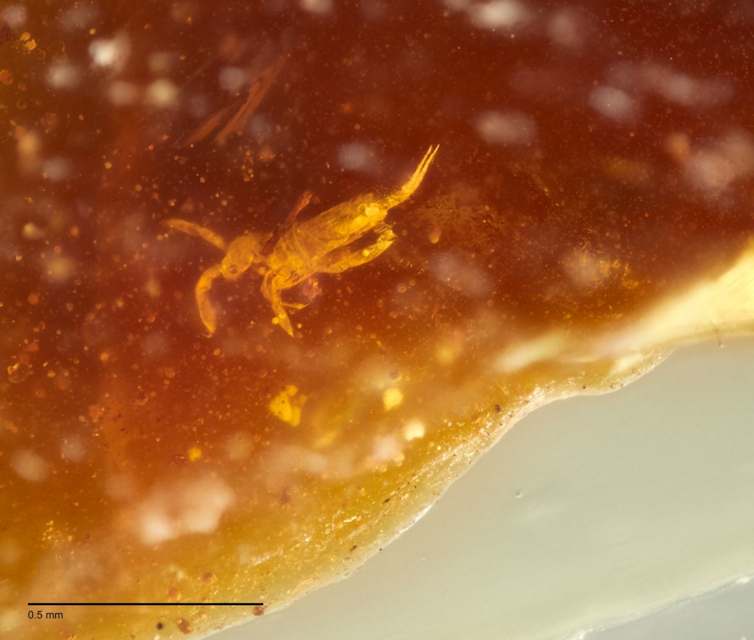
The unique value of Australian amber
Unlike typical, squashed fossil rock shapes, palaeontologists value amber for its remarkable ability to preserve inclusions in full three dimensions. This means we can study fossil organisms that would otherwise not have been recorded in such detail.
This is especially important considering that around 85% of modern biodiversity comes from arthropods (spiders, flies, beetles, bees and the like). Only 0.3% is represented by the “bony” mammals more commonly found as fossils in rocks.
Overall, only a tiny fraction of all life throughout geologic time has been fossilised. This means we work with a biased fossil record that may not accurately represent past diversity.
Amber provides a unique opportunity to find less common specimens. It helps to reveal the diversity of past ecosystems and to reduce these biases in our understanding of ancient life.
Most amber discoveries come from the Northern Hemisphere (the Baltic region, Spain, China, Myanmar). Australia is one of the rare places in the Southern Hemisphere where scientists can also study organisms trapped in amber.
The most promising site for finding these preserved organisms is a former coal mining area in Victoria. The amber and fossils from this site are estimated to be 42–40 million years old, dating back to the Eocene epoch.
At that time, Australia and Antarctica were still connected as part of the slowly fragmenting supercontinent called Gondwana. Australia had a warm and moist climate, and forests teeming with insects, arachnids and other creatures.
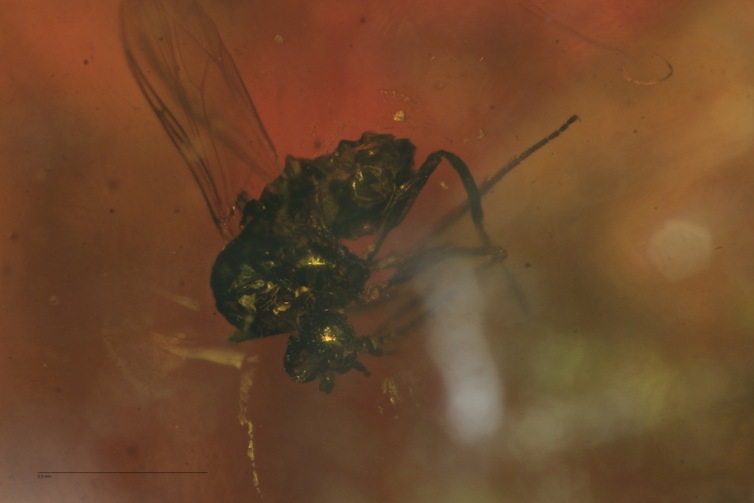
Living fossils
The amber we’re working with has been studied by researchers since 2014. Findings described in 2020 include biting midges, baby spiders, and even a pair of mating flies.
Our latest work reveals more details on the species. We’ve learnt not only where these organisms lived in the past, but also the surprising fact that many of them still exist in Australia’s forests today, albeit in greatly reduced geographic ranges.
This means creatures from ancient Gondwana have persisted for more than 40 million years. Their survival for so long gives even more reason to protect them into the future.
One major breakthrough in our research is based on new advancements at ANSTO’s Australian Synchrotron research facility in Melbourne. Improved resolution and the capability to scan smaller samples with X-rays have greatly improved how we can produce images of organisms trapped in amber. This allows us to create detailed 3D reconstructions, and we can identify the species more easily.
The synchrotron has also made it possible to finally detect inclusions within large, opaque pieces of amber that were hard to examine previously with traditional microscopes.
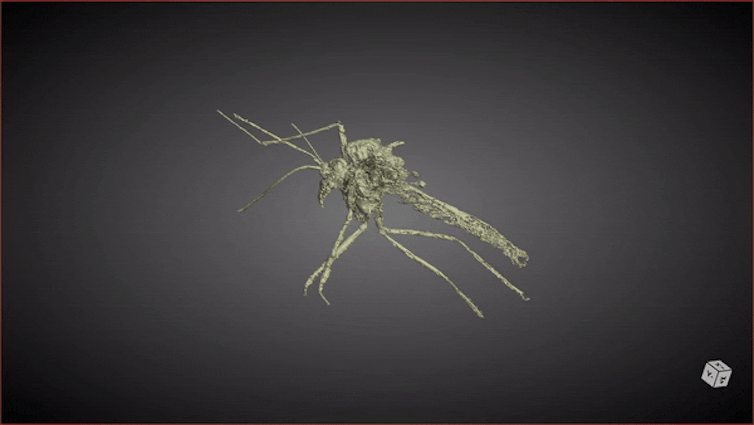
What have we found in Australian amber?
Some of the new major findings have been a “non-biting” or “feather” midge from the Podonominae insect subfamily. It’s the first fossil record of the genus Austrochlus in the Southern Hemisphere. Even though it was widely distributed globally in the past, it is now restricted to Australia.
With the synchrotron, we revealed not only the specimen’s sex and position in its family tree, but also internal structures of what are potentially wing muscles. Even in amber fossils, that’s a rarity.
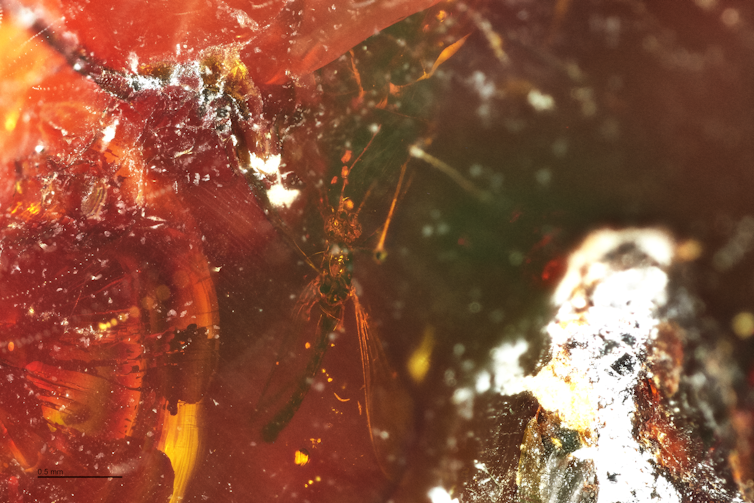
We also found a true biting midge that’s still around today (Austroconops). It’s the first fossil of its kind dating back to the Cenozoic, spanning the last 66 million years. Once widespread, today this midge is only found in Western Australia, again restricted just to our continent.
A wasp from the family Embolemidae, recognised today from all around the world to be a parasite on planthopper nymphs, is another highlight from Australian amber. This group has quite a scarce fossil record, and this is only the second time one has been found in the Southern Hemisphere.
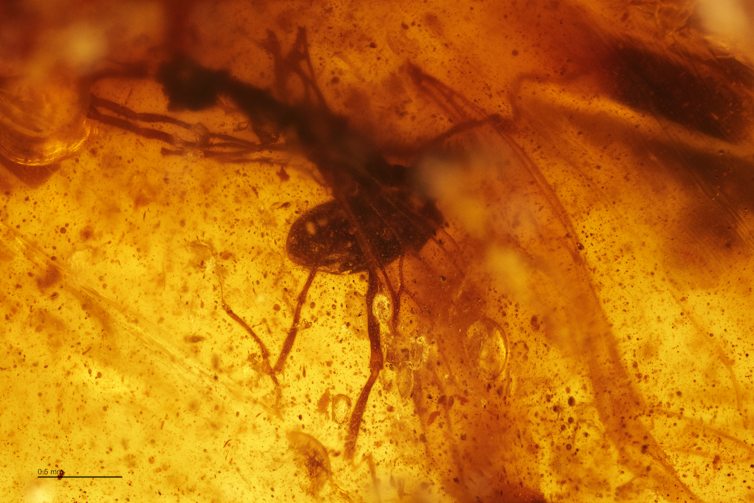
All of these insect fossils are the first of their kind found in Australia. And we’ve only scratched the surface – there are many more yet to be described.
Remarkably, these insects are still around in Australian forests today, tracing their lineage back in time to ancient Gondwana. Without realising it, we exist among living fossils.
While we know these species were widely distributed in the past, today most of them are found only on this continent. They now face new challenges which threaten their habitats. The threats include climate change, deforestation and urban sprawl.
Protecting these ancient “living fossils” and their environments is essential for the health of our native ecosystems.
Jeffrey Stilwell is an Associate Professor (Adj.) at Monash University and a Research Associate at the Australian Museum. Funding for the amber research has come from Monash University, Australian Research Council, ANSTO and Australian Synchrotron, Museums Victoria, and Australian Museum.
Maria Blake does not work for, consult, own shares in or receive funding from any company or organisation that would benefit from this article, and has disclosed no relevant affiliations beyond their academic appointment.
This article was originally published on The Conversation. Read the original article.







